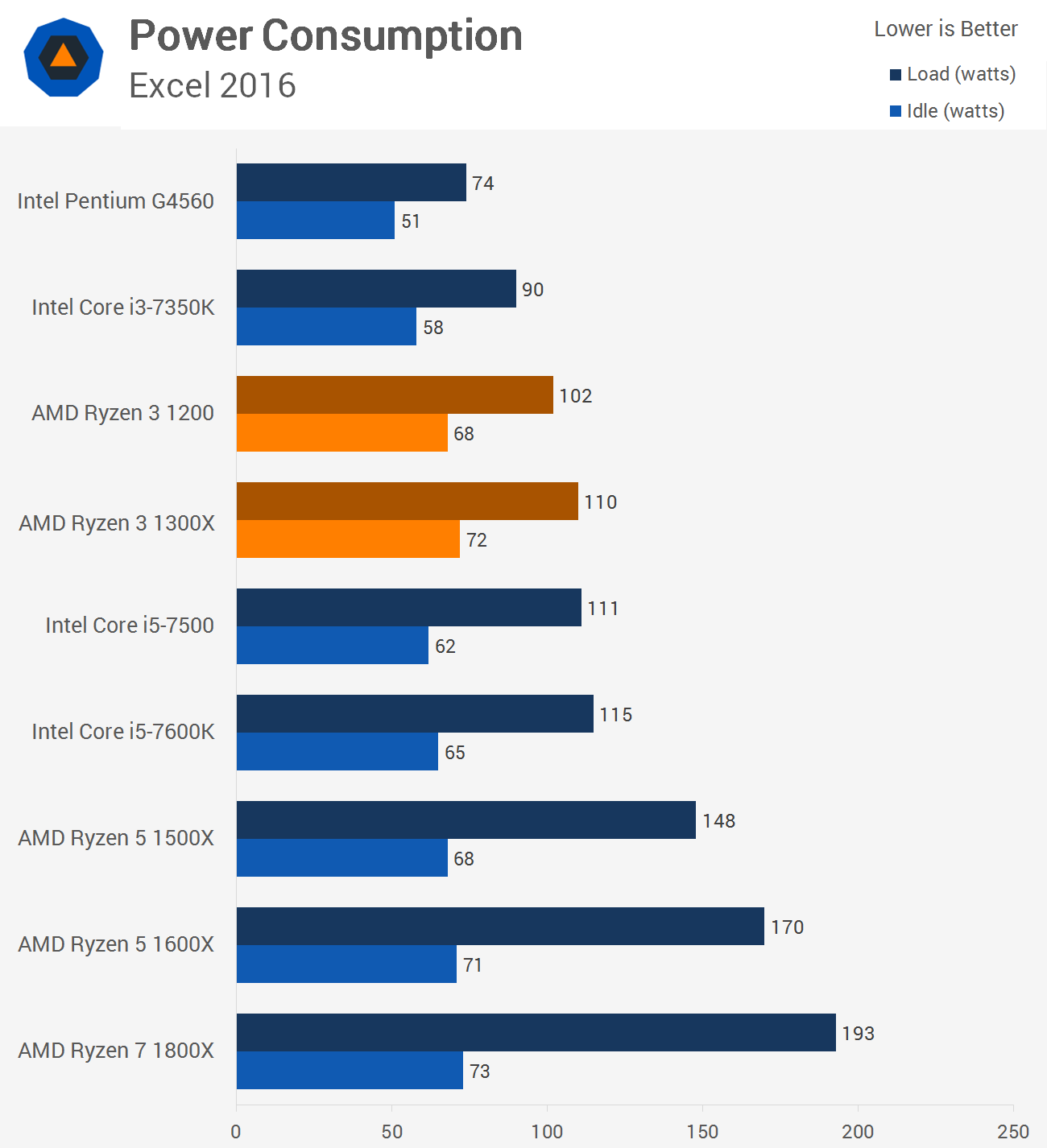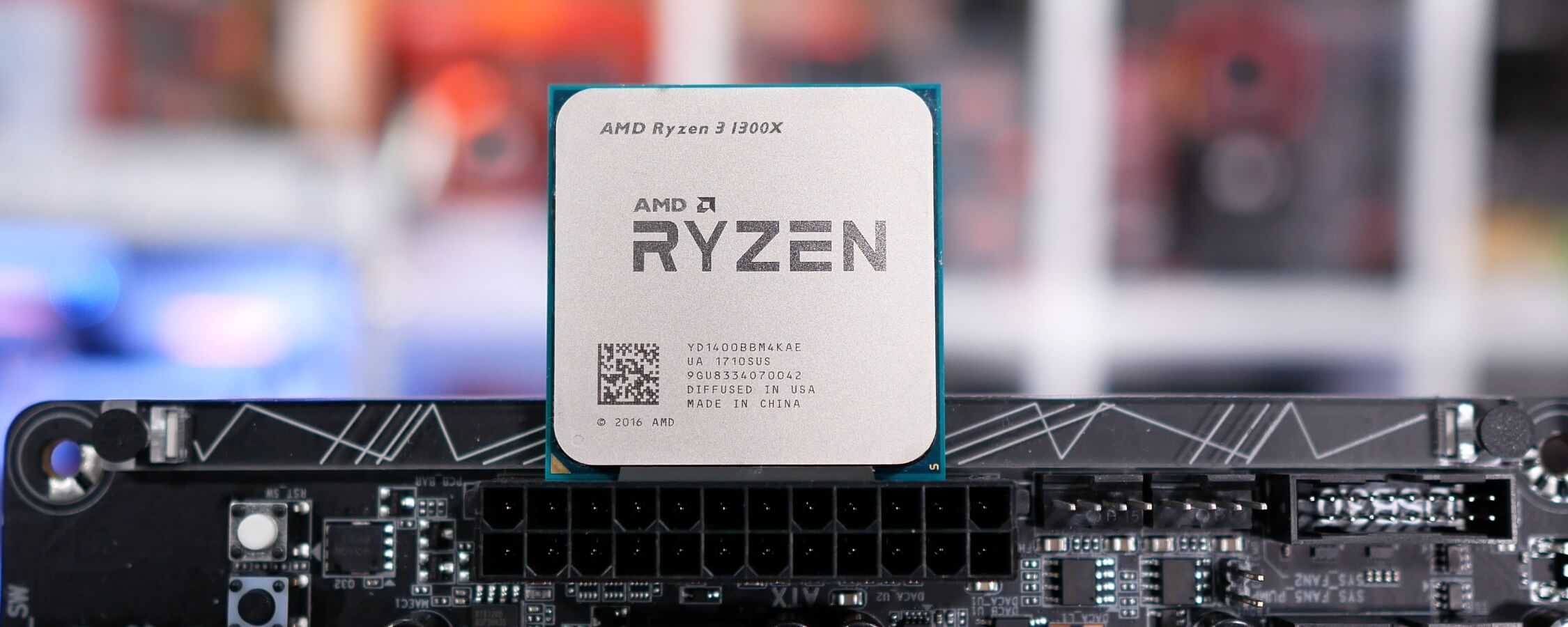Preliminary Thoughts, Pricing
Power Consumption

Power consumption is about where you would expect it to be and the Ryzen 3 1300X should consume around the same amount of power as the Core i5-7500. Keep in mind we are testing in a high-end X370 system with a liquid cooling pump and all the other more extreme gear you can expect in a high-end rig. In a lower specced system you will see better numbers, so keep that in mind.

Taking a final look at power consumption we have the figures from Cinebench R15's multi-threaded test and here the Ryzen 3 CPUs look a little more hungry than the Core i5-7500, though the numbers are hardly extreme and this is just a simulated benchmark.
Preliminary Thoughts
Now we have a good idea of how Ryzen 3 is going to perform. Overall things went as expected, which is both a good and bad thing for AMD's affordable quad-cores, but let's focus on competing Intel chips for the moment.
In terms of value, Ryzen 3 looks to have the locked Core i5 CPUs beaten, especially if you take overclocking into account. It's safe to assume that it will be possible to boost the performance of these Ryzen 3 CPUs by 10 to 15%, making the R3 1300X or 1200 an obvious choice over the dual-core Core i3-7350K, a CPU no one should buy at $150 anyway.
This sort of highlights the challenge Ryzen 3 faces: while superior than Intel in terms of value, it's beating an already beaten lineup.
If I wanted to build an affordable new computer, the Pentium G4560 still puts forward a strong case. At $87, it enables playable performance in all titles using an entry-level or mid-range graphics card and it's super efficient. Beyond that, the Ryzen 5 1400 and 1500X look like the obvious choice, yet if you are really serious about your PC, we say just save up a little more cash for the six-core R5 1600 and call it a day.
If you are aiming for the cheapest possible gaming build with a basic B350 board, 8GB of DDR4 memory, a GeForce GTX 1050, a 500GB Seagate FireCuda along with a cheap case and PSU, you'd save 18% on the entire build cost by opting for the R3 1200 over the R5 1600 and you'd be getting half as much L3 cache, two less cores and eight less threads.
For those wondering, the same system would be just 10% cheaper with the R3 1200 versus the SMT-enabled R5 1400, so spending more seems worth it here. Overall, the Ryzen 3 1200 should deliver relatively strong results at $110 for those who are hellbent on spending as little as possible.
Come next week and our official launch coverage of Ryzen 3 we'll explore more scenarios, including overclocking, particularly with the stock cooler, which will tell us if the 1200 is indeed worth buying over Intel's G4560.
Speaking of the G4560, a rumor has been circulating for a few weeks now that Intel is discontinuing that CPU or at least making it difficult to buy (the rumor has been denied by Intel). Right now you can still get it for the recommend retail price in Australia, but US availability has been poor or at least demand has been high enough to make them scarce.
Wrapping things up, AMD's Ryzen 5 lineup is so strong in terms of value that it's going to be difficult for Ryzen 3 to compete. If the R3 1200 can garner a reputation for being a great overlocker with its stock cooler, which is presumably going to be the budget-oriented Wraith Stealth, then that would make the chip enticing. Whatever the case, Intel's mid-range lineup is already dead.
Shopping shortcuts:
Considering we don't actually have a Ryzen 3 chip on hand yet, it goes without saying this is simply an estimate of performance and pricing. We'll follow up next week with official results though we are pretty confident about these preliminary results and for whatever it's worth our Ryzen 5 simulation was spot on.

